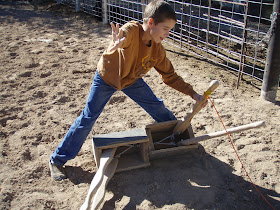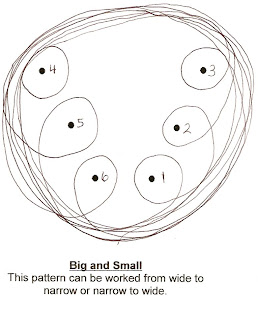by Teresa Fackrell

Here’s a great way to become perfect at just about anything: When you practice, don’t ever do it wrong. If you practice perfectly, you will become perfect. This applies to all rodeo events and anything else you would like to do exceptionally well.
The Jazz Master’s Secret
Legendary jazz guitarist Howard Roberts says the secret of his virtuosity: “Never practice a mistake.”
According to Roberts, most musicians, in their eagerness to play complex pieces, move too fast. What he had always done and the secret to his success was to practice only what he could do perfectly.
His theory was that any learning is the biological process of creating neural networks in the brain. Every perfect repetition beats a good path one that you can travel on later. Every incorrect repetition beats a parallel but incorrect path one that you can easily slide onto if you aren’t careful.
The more you practice the right moves, the deeper the memory path. The trick is to make the correct paths as deep as possible and the incorrect paths shallow or nonexistent.
The faster you eventually perform a task, the more likely it is that you will make a mistake, unless, that is, you have cut only one path for it a perfect one. Likewise, when you are performing a task under stress or in association with other tasks, it is easy to bungle it unless you have no neurological way to screw it up.
The trouble with most guitar students, Roberts said, is that they rush themselves. They are fixated on completing a movement rather than on performing it well. They figure the sooner they can simulate the completed movement, the better they are doing. But the truth is quite different.
How To Practice Everything Perfectly
Each rodeo event has several parts and is complex. That’s why we learn them in pieces. Whether it’s guitar playing, barrel racing, or roping, the ultimate performance is a complex combination of many simpler tasks.
Thus, to make the performance perfect you need to perfect each of the simpler tasks. To do a task perfectly even a simple task usually means slowing down. You should slow down as much as you need to in order to make the movement perfect.
Make sure to take time to practice at a slow pace. This may mean walking or trotting through a barrel pattern several times or sitting on the horse and roping the dummy. The important thing is that when you go slow, you should be moving, sitting, swinging, and riding the exact same way as when you go fast.
Don’t worry about your progress. Doing a repetition at half speed does not make the learning process twice as long. It makes it faster, because you are creating just one neural pathway and none to cause you to stray from your course.
The fundamental rule is this: Do it right every time you try and you will learn faster and perform better. The secret to perfect performance is not some predetermined natural gift, but a determination to practice it correctly. Consistent perfect practice results in consistent perfect performance.
The Jazz Master’s Secret
Legendary jazz guitarist Howard Roberts says the secret of his virtuosity: “Never practice a mistake.”
According to Roberts, most musicians, in their eagerness to play complex pieces, move too fast. What he had always done and the secret to his success was to practice only what he could do perfectly.

His theory was that any learning is the biological process of creating neural networks in the brain. Every perfect repetition beats a good path one that you can travel on later. Every incorrect repetition beats a parallel but incorrect path one that you can easily slide onto if you aren’t careful.
The more you practice the right moves, the deeper the memory path. The trick is to make the correct paths as deep as possible and the incorrect paths shallow or nonexistent.
The faster you eventually perform a task, the more likely it is that you will make a mistake, unless, that is, you have cut only one path for it a perfect one. Likewise, when you are performing a task under stress or in association with other tasks, it is easy to bungle it unless you have no neurological way to screw it up.
The trouble with most guitar students, Roberts said, is that they rush themselves. They are fixated on completing a movement rather than on performing it well. They figure the sooner they can simulate the completed movement, the better they are doing. But the truth is quite different.
How To Practice Everything Perfectly
Each rodeo event has several parts and is complex. That’s why we learn them in pieces. Whether it’s guitar playing, barrel racing, or roping, the ultimate performance is a complex combination of many simpler tasks.

Thus, to make the performance perfect you need to perfect each of the simpler tasks. To do a task perfectly even a simple task usually means slowing down. You should slow down as much as you need to in order to make the movement perfect.
Make sure to take time to practice at a slow pace. This may mean walking or trotting through a barrel pattern several times or sitting on the horse and roping the dummy. The important thing is that when you go slow, you should be moving, sitting, swinging, and riding the exact same way as when you go fast.
Don’t worry about your progress. Doing a repetition at half speed does not make the learning process twice as long. It makes it faster, because you are creating just one neural pathway and none to cause you to stray from your course.
The fundamental rule is this: Do it right every time you try and you will learn faster and perform better. The secret to perfect performance is not some predetermined natural gift, but a determination to practice it correctly. Consistent perfect practice results in consistent perfect performance.


















